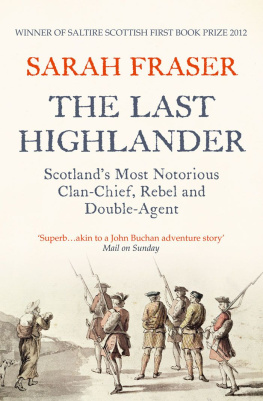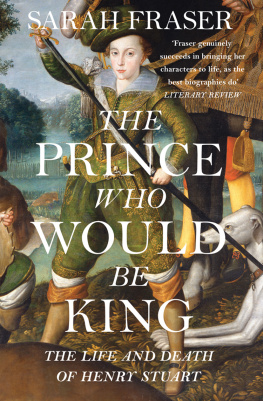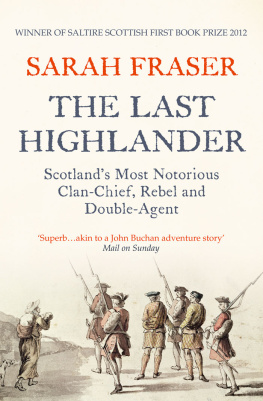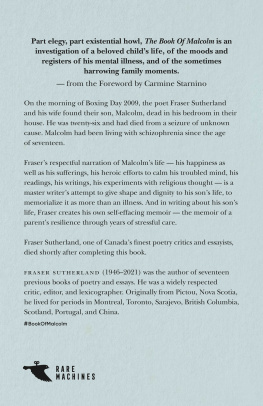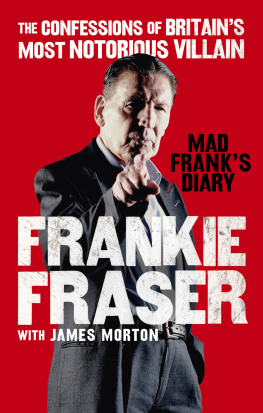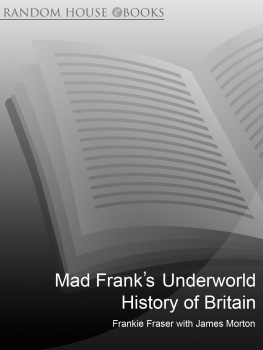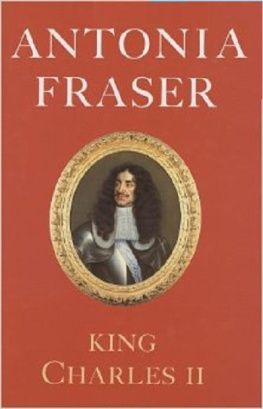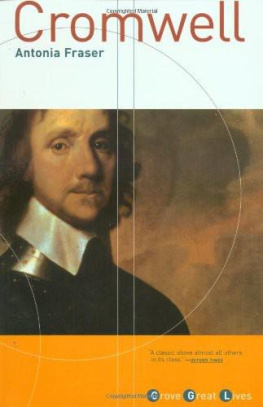The Last Highlander
SCOTLANDS MOST
NOTORIOUS CLAN CHIEF,
REBEL & DOUBLE AGENT
SARAH FRASER

For Kim
&
For Arabella Vanneck
19592011
[The soul] demands that we should not live alternately with our opposing tendencies in continual see-saw of passion and disgust, but seek some path on which the tendencies shall no longer oppose, but serve each other to common end The soul demands unity of purpose, not the dismemberment of man
ROBERT LOUIS STEVENSON
A son can bear with equanimity the loss of his father, but the loss of his inheritance may drive him to despair
NICCOL MACHIAVELLI
CONTENTS
Etching of Simon Fraser, Lord Lovat after William Hogarth. ( Scottish National Portrait Gallery )
James II and family, 1694, by Pierre Mignard. ( The Royal Collection 2011 Her Majesty Queen Elizabeth II/The Bridgeman Art Library )
Queen Mary II, c . 1685, studio of Willem Wissing. ( Kenwood House, London English Heritage Photo Library/The Bridgeman Art Library )
King William III by Godfried Schalcken. ( The Crown Estate/The Bridgeman Art Library )
Prince James Francis Edward Stuart, 18th century English School. ( Scottish National Portrait Gallery/The Bridgeman Art Library )
Louis XIV in Royal Costume, 1701, by Hyacinthe Rigaud. ( Louvre, Paris/Giraudon/The Bridgeman Art Library )
View of Edinburgh by J Slezer (engraved copper plate) produced for D. Browne, London, 1718. ( The British Library Board )
Major James Fraser of Castle Leathers, c . 1720, attributed to John Vanderbank. ( Private Collection )
John Campbell, 2nd Duke of Argyll and Greenwich, William Aikman. ( Scottish National Portrait Gallery )
Archibald Campbell, 3rd Duke of Argyll, attributed to Allan Ramsay. ( Scottish National Portrait Gallery )
Sir James Grant. Etching by John Kay, 1798. ( The Mary Evans Picture Library )
The death of Colonel Gardiner on the field of Prestonpans. Sir William Allan lithograph by E. Walker. ( The Mary Evans Picture Library )
George II at the Battle of Dettingen by David Morier. ( Private Collection/Arthur Ackerman Ltd/The Bridgeman Art Library )
Field-Marshal George Wade, attributed to Johan van Diest. ( Scottish National Portrait Gallery )
Prince Charles Edward Stuart, by William Mosman. ( Scottish National Portrait Gallery )
The Battle of Culloden, 1746. Coloured engraving published by R. Sayer and J. Bennett, London c . 1780. ( The National Army Museum, London )
William Augustus, Duke of Cumberland, mid 18th century English School. ( Royal Armouries, Leeds/The Bridgeman Art Library )
Lord Lovats ghost. Mezzotint by Samuel Ireland. ( Grosvenor Prints/The Mary Evans Picture Library )
Simon Fraser, Lord Lovat. Engraved by Cook after a portrait by Le Clare. ( The Mary Evans Picture Library )




His execution was a public holiday. Tens of thousands crowded onto Tower Hill for the entertainment. In the Tower the prisoner raged at his barber. In a few hours he would lose his head. The barber offered up the condemned mans wig, very light on powder on account of it being a rainy day. The prisoner tossed it back to be taken away, properly groomed, generously powdered and then returned. If he had a suit of velvet embroidered, he would wear it today; he would go to the block he said, with pleasure. These sartorial sensitivities belonged to the last aristocrat in Britain to be beheaded.
On this damp, grey, very English, spring day, Thursday 9 April 1747, warders and friends begged his Lordship to petition the King for mercy. He was so old and infirm that his life was not worth asking, he replied.
This was not true. His life, and the ending of it, was worth a lot to many different people.
For my part, he claimed, I die a martyr for my country.
The barber returned his wig and his Lordship thanked him. I hope to be in heaven by one oclock, he said, or I should not be so merry now The soul is a spiritual substance. It could not be dissolved by time.
The barber wished the prisoner a good passage across. Lovat looked out of the window. He was going to slip through the bars of life and escape to heaven, he was sure of it.
* * *
The previous month, Lord Lovat had been impeached for high treason as a Jacobite rebel. The whole House of his fellow Lords, including many former friends and allies, removed to Westminster Hall especially for the trial and one by one pronounced him Guilty, upon my Honour.
Simon Fraser, the 11th Lord Lovat and leader of Clan Fraser MacShimidh Mor in Gaelic was the son of the great Simon and the last of the great CelticScottish chiefs. The Frasers had fought their way from France onto the beaches of England with William the Conqueror. One of Lovats forebears was Robert the Bruces chamberlain. Another had been William Wallaces compatriot in the Scottish Wars of Independence from England; when the English captured him he was hung, drawn and quartered.
Four hundred years after his ancestors bloody end, Lovat was condemned to suffer the same brutal fate, though in the end he was merely beheaded. Lovat would die for an independent Scotland or North Britain as many maps now called it to secure the fortunes of the Fraser clan, and for Bonnie Prince Charlies lunge at the thrones of his Stuart ancestors. For decades Lovat had maintained a double life, spying for and against the Houses of Stuart and Hanover. He had made fast friends and sworn enemies. His scheming had inadvertently led to the 1707 Act of Union, in which the Parliaments of Scotland and England were incorporated into Great Britain. He cursed it as Cette Union infernelle .
In Georgian Britain, all convicted felons about to be launched into eternity, both common and gentle, were expected to do so showing plenty of bottom, a certain gutsy dash. According to the broadsheet reports, in the days before Lovats beheading, the old man (he was about eighty when he died) faced his fate with jocoseness and gaiety. Smoking his last pipe, he knocked it out into the fire, and gave the pipe away as a relic. The ash from it fell in little clods. He watched the eddying specks as the dust rioted away in the air. Now, gentlemen, he said to his companions, the end of all human grandeur is like this snuff of tobacco.
As he smoked his pipe, ate his last meal, drank beakers of hot chocolate, dressed and prayed, the wooden scaffold grew greasy and slippery in the morning drizzle. London life went on around it. Maids raised fires in the first-floor drawing rooms around the square on Tower Hill, to take the chill from the rumps of the curious rich and rare as they watched in comfort. Tall chimneys smoked.
Before dressing to spectate at Tower Green, a gentleman wrote to his friend over breakfast. Lord Lovat is to lose his head in a few hours, and the day being rainy is likely to prove a great disappointment to the crowds that are hastening to see the execution Perhaps such tragical scenes may do good to somebody: and though this old man be highly guilty and his guilt very inexcusable, yet a considerate spectator cannot but be led to pity and bewail the corruption and infatuation of human nature when he sees a man almost at the utmost period of human life, under no necessitous circumstances with a plentiful fortune and everything he could reasonably desire without any danger of losing it; and yet not content therewith, he must disturb the peace of the country, and endeavour to overthrow the constitution thereof. Men should consider that when they are endeavouring to break down hedges a serpent may bite them.
Next page
